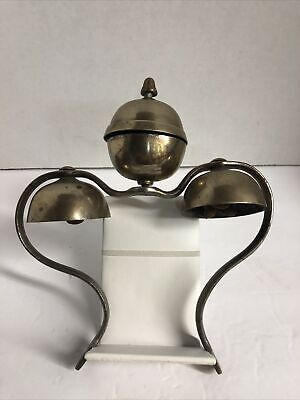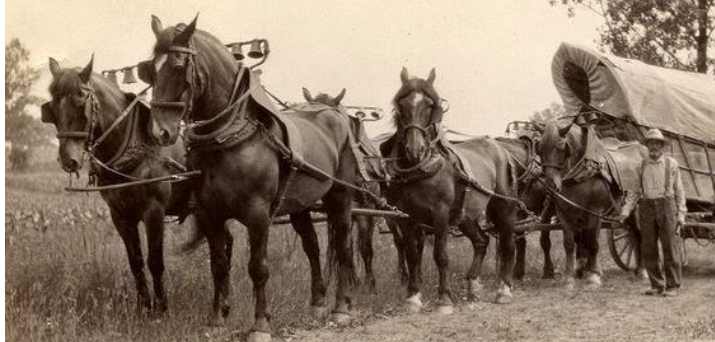Is this an Eastern Seaboard museum? The photo in your post appears to show a type of Conestoga Wagon hitch in the harness setup, attached to an actual Conestoga wagon. Americans had two kinds of “covered wagons”, with Prarie Schooners used in the western settlement because they were lighter, could be floated across rivers, making travel faster, though still only 8 to 15 miles (a long distance day!) in daily travel. Schooners are squared, flat-bottomed in their body design. Differences in wagon designs is easy to see when side-by-side.
Conestoga wagons were heavier built, made to carry freight along the Seaboard States. Mostly used east of the Appalachians, in the early 1800s where there were few (all terrible) roads. The canvas covers protected the supplies during transit. Conestoga wagons had curved bodies with curved bottoms, high sides, which helped keep their freight loads in place going up and down the mountains. They did not carry people, even the Teamster himself. Frighters had regular delivery routes, so they had bells on the 6-horse Teams to alert other travelers of their approach. With bell warning, oncoming wagons could pull off to allow both wagons to pass without problems.
Any Teamster who got in trouble on the road, needed help getting out, had to forfeit his bells to the helping Teamsters as payment for aid. Rules of the Road sure have changed! Ha ha This is the source of the old saying “I will be there with bells on” when promising a safe arrival! Arriving at a destination silently tells EVERYONE you had trouble getting there.
I am sure there is some kind of special collar arrangement to hold the bells above the collars. The Conestoga bell frame is sizable, has spiked ends that go on-in-anchored to the collar to hold them in place. I “believe” the left wheel horse does not always have bells because the wagon driver actually rode that horse, so bells would be in his way. Could be wrong on that point though. Most of the Conestoga Teams I have seen wore additional bells under the neck. Usually a string of 4 actual bells (not round sleigh bells) hung low enough to ring well below the collar.
They originally drove the six with a jerk line, not reins as seen on modern draft teams. But maybe all Teams were not good on a jerk line, so they went to reins later. This left side rider is supposed to be part of the reason Americans drive on the left side. The two Teamsters would stop and “visit awhile” in the middle of the wagons passing each other. Left to left, made conversation easier as they exchanged news of the road ahead, gossip, etc.
The Carriage Association of America is the keeper of horse drawn vehicles and all knowledge related to them. I am sure they could help you with the bells and how they are anchored. There are folks there who specialize in American Covered Wagon details. For some reason I just have a mental blank on how the bells go on the collars! Not paying attention when I saw them. Not sure my photos would be of any help, those were wagons in 1976. Conestoga bell frames on a table show the legs ending in sharp points, with the secondary strings of lower neck bells, sold together at the auction.









